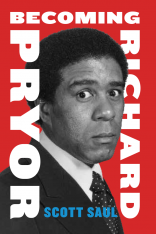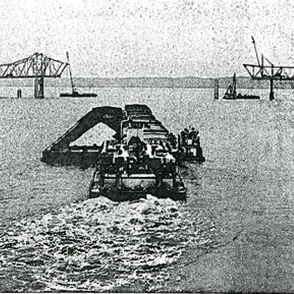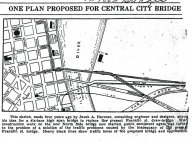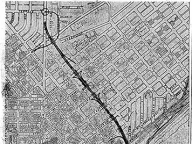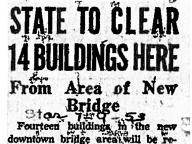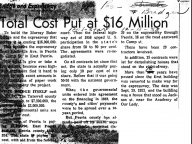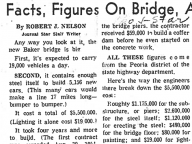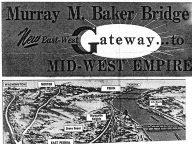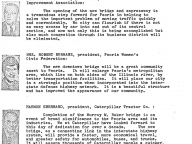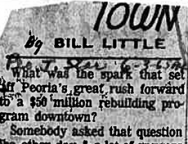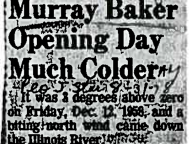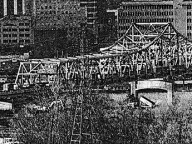The Murray-Baker Bridge
“[The] Murray M. Baker bridge symbolizes the progress of the Tri-County region....The practical design, the sturdy construction, and the flow of traffic will give to all who see and use [it] a feeling of confidence in the future.”
— Bradley University president Harold Hodes
Connecting Peoria to East Peoria, the Murray M. Baker Bridge was taken as a sign that late-1950s Peoria was on the upswing: “all who see and use [it],” wrote Bradley University’s president at the time of its unveiling, would have “a feeling of confidence in the future.” Practically, the bridge improved traffic for commuters from the surrounding area and brought the new Interstate Highway System through downtown Peoria. Yet as much as it signaled the opening of one era, its construction also spelled the closing of another: the era of North Washington Street’s centrality as a Peoria red-light district, and of Marie Pryor’s time as a madam there.
As early as 1940, Peoria business leaders began calling for a new bridge across the Illinois River. The existing bridge at Franklin St. was too narrow and dilapidated to accommodate the traffic from workers commuting to the Caterpillar plant in East Peoria. In 1951, the state highway division recommended that the start of the bridge span North Washington Street on the Peoria side. The 300 block, the black-oriented portion of the red light district, was at the very center of the construction project. Condemned as blight, it was among the first areas to be demolished for the bridge. There appear to have been no public debates about the people displaced by the bridge.
A massive construction project, the bridge took four years and more than $16 million to complete, much of it defrayed by Dwight Eisenhower’s 1956 National Interstate and Defense Highways Act. Like so many US cities in the late-1950s, Peoria was linked by new interstate highways to its neighbors. Interstate 74, which connected Illinois with Ohio to the east and Iowa to the west, ran over Peoria’s new bridge and right through the city.
The bridge was named after Murray M. Baker, an early instigator of plans for the bridge and a former vice president at Peoria’s two large industrial firms, Caterpillar and Le Tourneau. Tellingly, the presence of these two companies had given Peoria the nickname “the earth-moving capital of the world,” their machines helping to build more than 70,000 miles of highways throughout the United States in the ’40s and ’50s. With the Murray Baker Bridge, these earth-moving projects came home.
When the Murray Baker Bridge opened for business on December 12, 1958, Peoria’s newspapers were euphoric about its promise. It was, they fancied, a “new east-west gateway to a vast Mid-West empire,” ferrying 19,000 cars a day to a splendid future. It would be, they hoped, the spark for a downtown renaissance and, more immediately, a godsend for commuters.
Looking back from the close of the twentieth century, one regional planning commissioner affirmed the positive impact of the bridge and its highway on Peoria’s economy: “Peoria has a uniquely strong downtown. The interstate is a major reason.” If the bridge hadn’t brought the interstate through Peoria, it might have shared the fate of nearby factory towns like Canton, Illinois: “You’d have no growth and gradual decline.”
